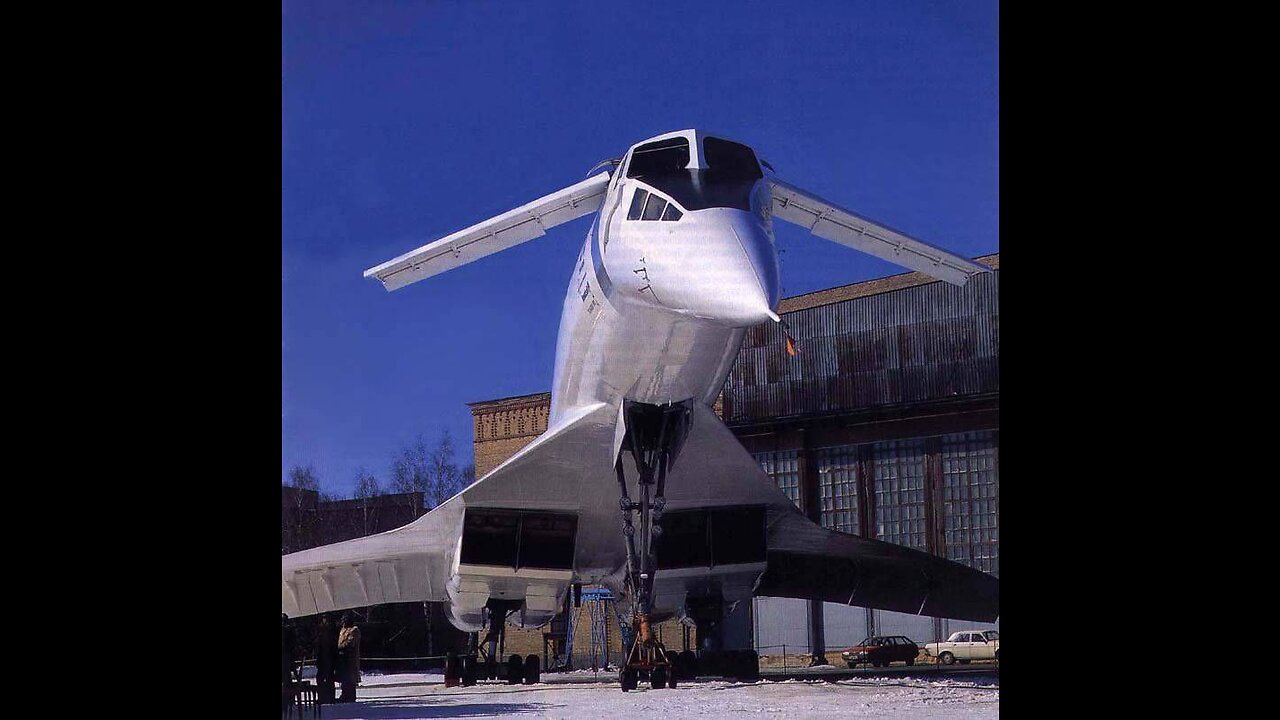Premium Only Content

Tupolev Tu-144 became a flying laboratory
The Tu-144LL with tail number 77114 was a unique aircraft of its kind, even among its peers: before receiving the LL marking, it was in fact called Tu-144D, i.e. modified.
In the mid-1980s it was used as a simulator for cosmonauts preparing for flights under the Buran program. The training of cosmonauts on the Tu-144 was possible due to the fact that the cabin of the Buran shuttle had a similar structure to that of an airplane, and the speeds and landing characteristics were comparable.
In the Tu-144 D variant this aircraft flew periodically until 27 February 1990.
In 1993 it was exhibited at the static exhibition of the MAKS air show, but later returned to flights again: although the plane did not take off for six years, NASA specialists were interested in using the search capabilities of the Tu-144 and so the first flight of the updated Tu-144LL took place on November 29, 1996.
The Tu-144 flying laboratory participated in a joint US-Russia flight research program to develop technologies for creating a new generation of supersonic passenger aircraft.
On the Tu-144LL the engines were replaced by upgraded twin-circuit turbojet engines used on the Tu-160 strategic bomber. The use of these engines made it possible to increase the speed from Mach 2.15 to Mach 2.3.
At the end of the research program, the United States wanted to purchase this aircraft but due to the fact that it was equipped with the engines of the then secret Tu-160 a relevant purchase agreement was not signed and the aircraft remained in Russia. Those who worked with this unique aircraft also opposed its move to the United States at the time.
-
 2:16:33
2:16:33
Tucker Carlson
6 hours agoTucker Carlson and Michael Shellenberger Break Down the California Fires
210K297 -
 58:50
58:50
Laura Loomer
5 hours agoThe Great Replacement (Full-Length Documentary)
30.2K27 -
 LIVE
LIVE
Razeo
5 hours agoEp 31: Finishing March Ridge & onto Muldraugh tonight
231 watching -
 1:00:37
1:00:37
Adam Does Movies
4 hours ago $3.53 earnedBatman II Update + Flash Director Fails + Movie Bombs! - LIVE!
27.4K4 -
 2:26:24
2:26:24
We Like Shooting
18 hours ago $1.18 earnedWe Like Shooting 593 (Gun Podcast)
19.7K -
 57:03
57:03
Flyover Conservatives
1 day agoJack Hibbs Blasts California Leaders: Must-Watch!; Can Trump Fix the Mess? How Long will it Take? - Dr. Kirk Elliott | FOC Show
51.1K7 -
 2:00:50
2:00:50
DillyDillerson
5 hours agoTalking to the moon!! Just some live views of the FULL MOON!!
32.2K11 -
 1:29:29
1:29:29
Glenn Greenwald
9 hours agoWith Biden Out, U.S. Finally Admits Harms of His Israel / Gaza Policy; Biden Pays Homage To George W. Bush; Insane Women’s Tennis Scandal: An “Abusive” Coach | SYSTEM UPDATE #388
62.9K86 -
 3:12:23
3:12:23
Danny Polishchuk
11 hours agoWho's To Blame For LA Fires, Jewish Tunnels Update + Forbidden Anthropology
26.8K4 -
 1:08:10
1:08:10
Donald Trump Jr.
11 hours agoOne Week Until Inauguration, Live with Rep Anna Paulina Luna & Sen Tommy Tuberville
127K200